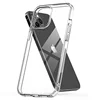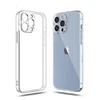Deciding which iPhone to buy has always been tricky and no doubt you have many questions. Which screen size is best for you, and how much storage do you need? Should you save money by selecting an older model, or should you splash out on the latest iPhone? Which iPhone is the best compromise between specs and value for money?
In this article, we talk you through each of the phones currently available from Apple, to help you decide which is best for you. We discuss iPhone prices, specs and features, paying particular attention to the cameras, screens and durability, and how the design of each handset differs, so you should leave feeling much more confident about which iPhone you should get.
For more help with your choice see our full reviews of the latest iPhones (linked below) and our Best iPhone comparison chart where we compare all the new iPhone with the ones still on sale.
Best iPhone 2025
The best iPhone isn’t necessarily the best iPhone for you due to its high price tag. Luckily there is a perfect iPhone for everyone, with each model offering the perfect compromise of features to price.
Here is a quick-at-a-glance comparison of all the iPhones Apple currently sells, from the ultimate iPhone to the cheapest iPhone you can buy right now.
1. Apple iPhone 16 Pro Max – The ultimate iPhone
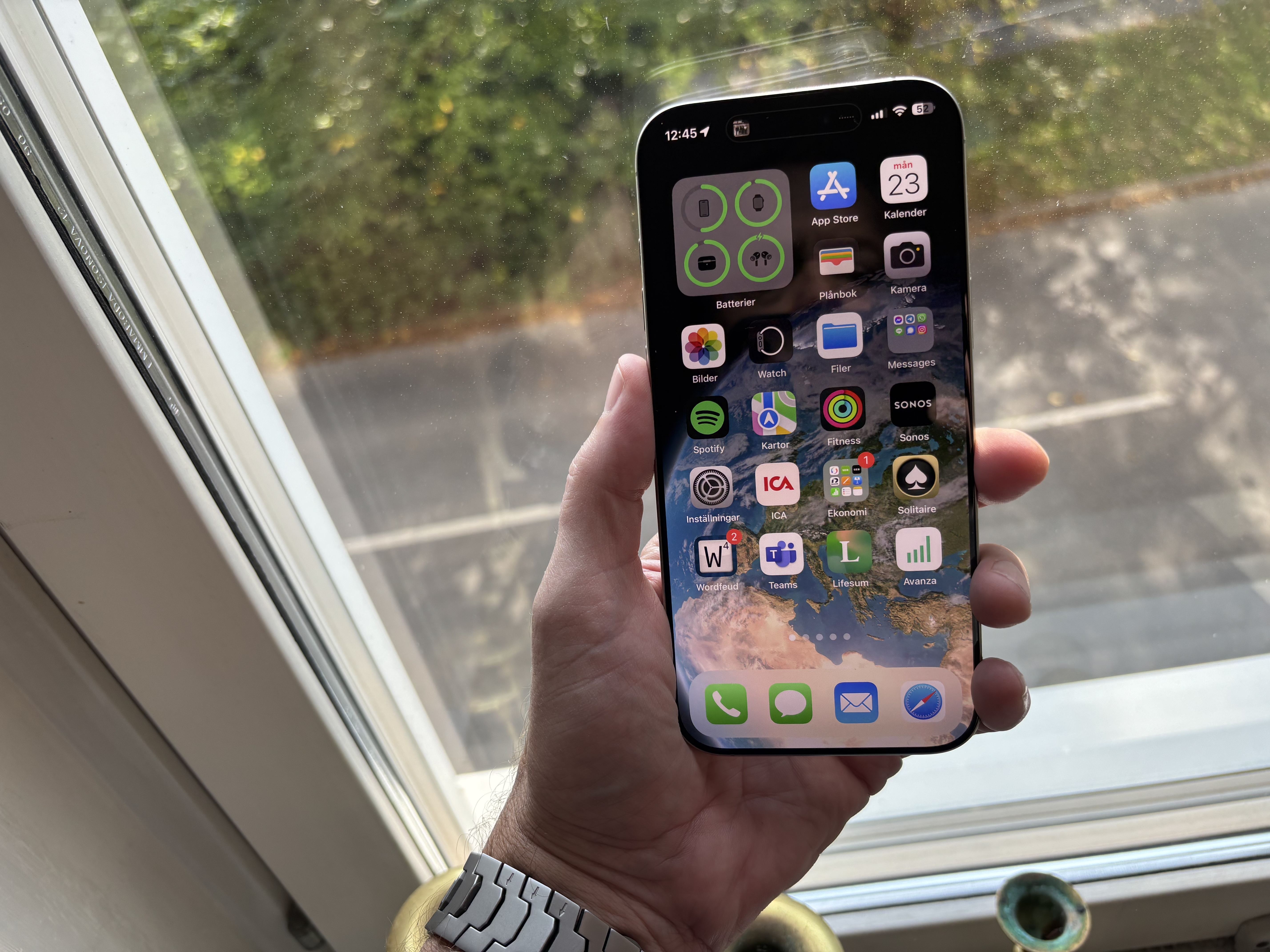
Price When Reviewed:
$1,199
Best Prices Today:
Just as the iPhone 16 Plus is simply a larger version of the iPhone 16, so too is the iPhone 16 Pro Max just a larger iPhone 16 Pro. In past years, the Pro Max version would have some distinguishing feature (like better telephoto camera) but that isn’t the case this year.
The iPhone 16 Pro Max does get a big boost in battery life from its larger battery, and an even bigger screen than the previous generation, up from 6.7-inches to 6.9-inches.
Read our full
iPhone 16 Pro and Pro Max review
2. Apple iPhone 16 Pro – The iPhone for photography fans
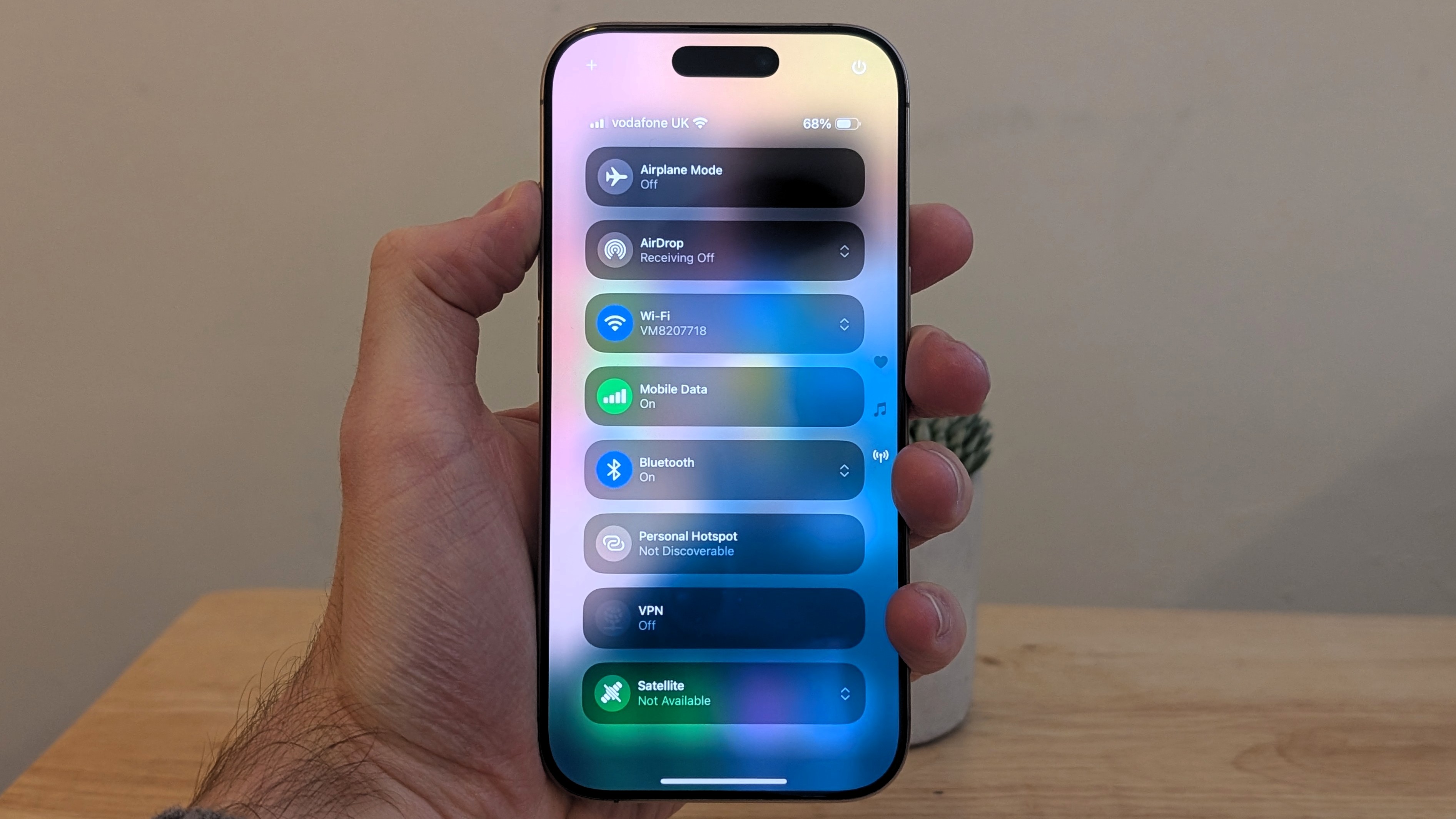
Price When Reviewed:
$999
Best Prices Today:
The Pro version of the iPhone 16 comes in a titanium shell (like it’s predecessor) and offers slightly better performance and battery life than the standard iPhone 16.
The photo and video capabilities are where the Pro models stand out. They include a 5x telephoto camera, a sharper 48-megapixel Ultra Wide camera, and support for high-end formats like ProRAW, HLG video, and video recording at up to 4K and 120fps. And yes, it includes the new Camera Control button.
Read our full
Apple iPhone 16 Pro review
3. Apple iPhone 16 Plus – Big screen, better battery
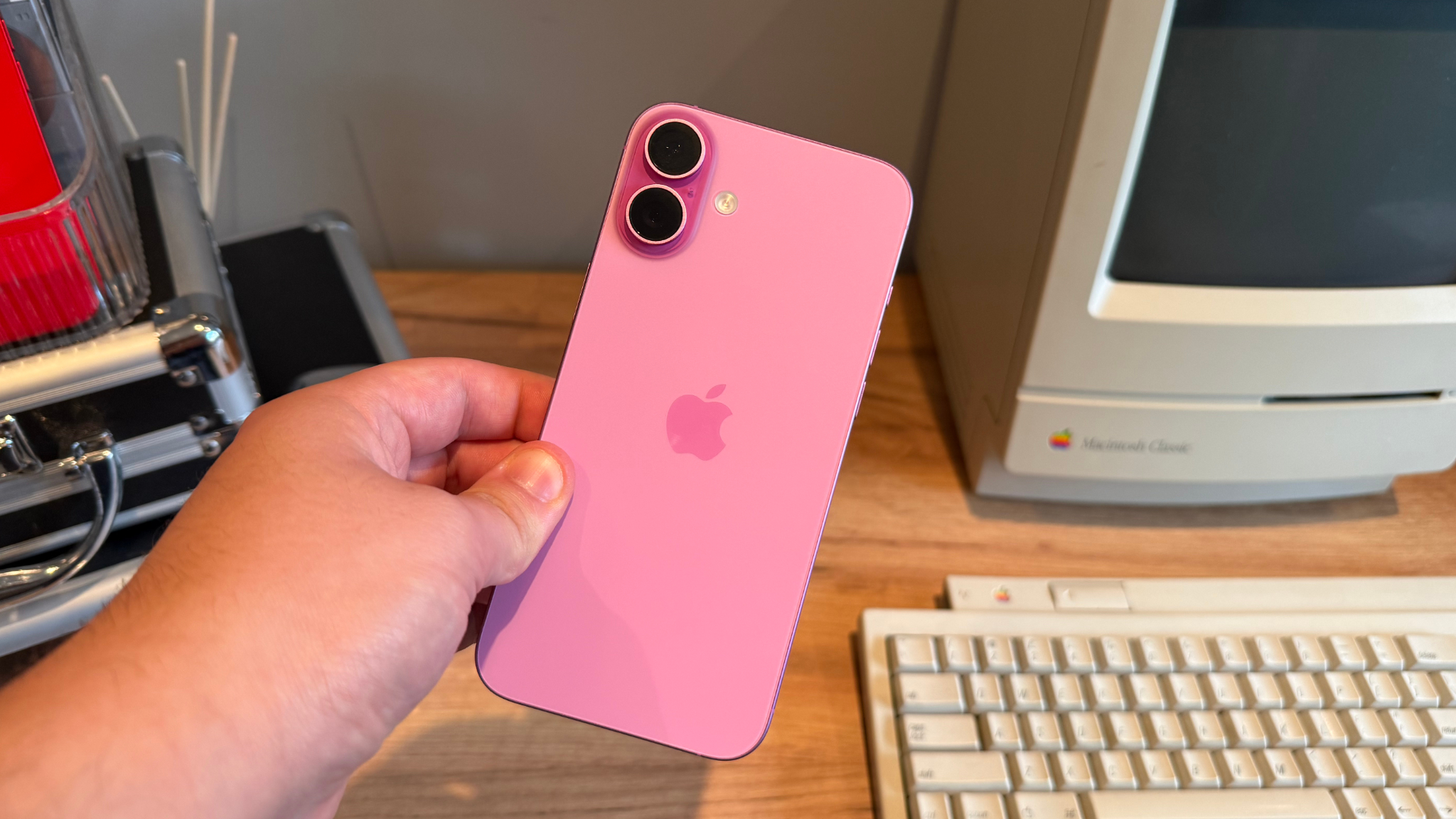
Price When Reviewed:
$899
Best Prices Today:
A larger version of the iPhone 16, with the same specs and features, outside of the obviously larger display. The only place the iPhone 16 Plus differs in performance from the iPhone 16 is in its significantly longer battery life. After all, if the phone is bigger, it can fit a larger battery inside.
Read our full
iPhone 16 and 16 Plus review
4. Apple iPhone 16 – The iPhone for everyone
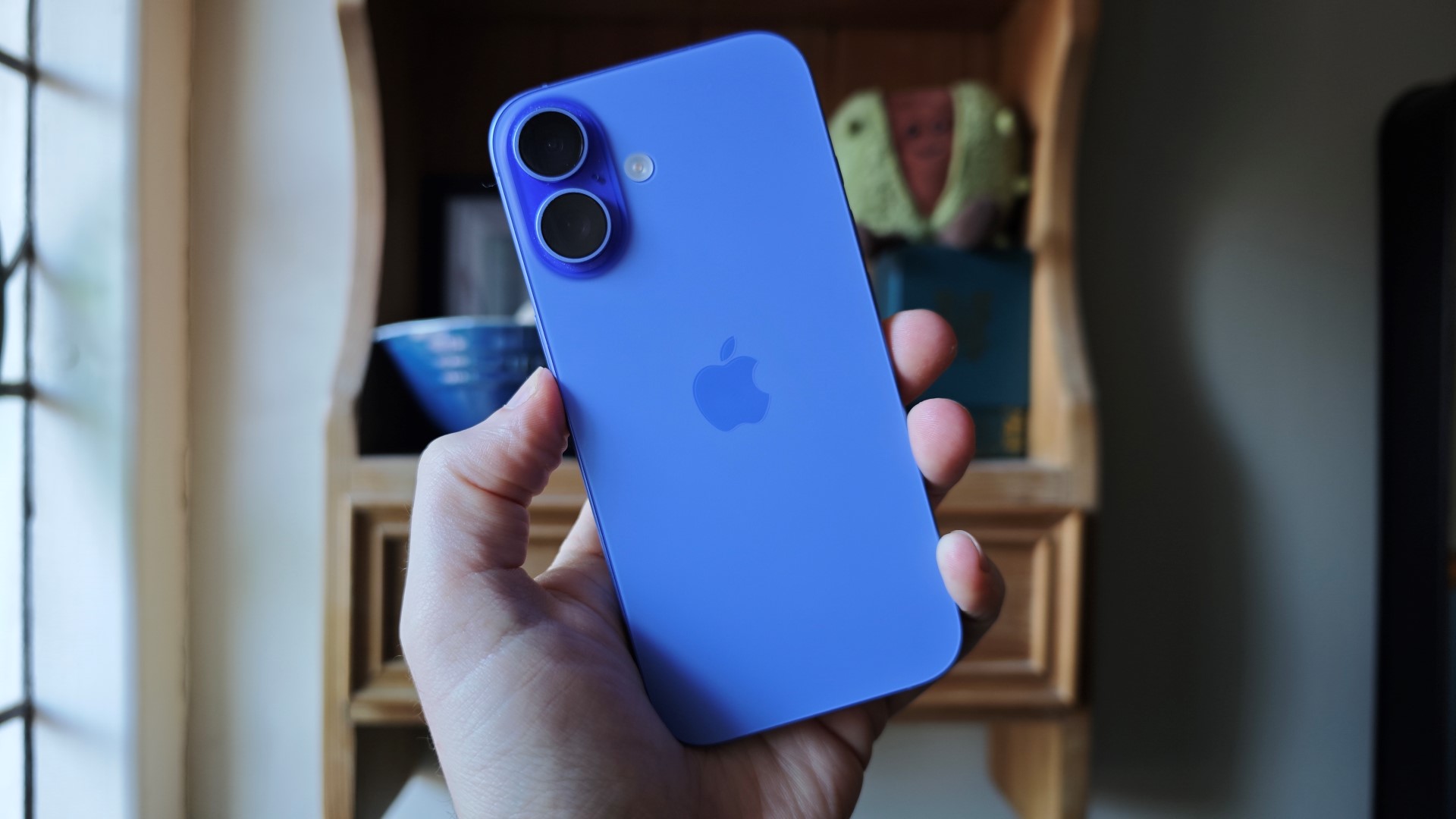
Price When Reviewed:
128GB $799, 256GB $899, 512GB $1,099
Best Prices Today:
The iPhone 16 is similar to the iPhone 15, but the A18 processor supports Apple Intelligence, while the iPhone 15 doesn’t. It also delivers much longer battery life than the iPhone 15, and includes a new Camera Control button to make it faster and easier to launch your favorite photo app and take pictures.
To find out how the iPhone 16 compares to other iPhones in the line up read: iPhone 16 vs iPhone 16 Pro and iPhone 15 vs iPhone 16.
Read our full
Apple iPhone 16 review
5. Apple iPhone 16e – The cheapest iPhone
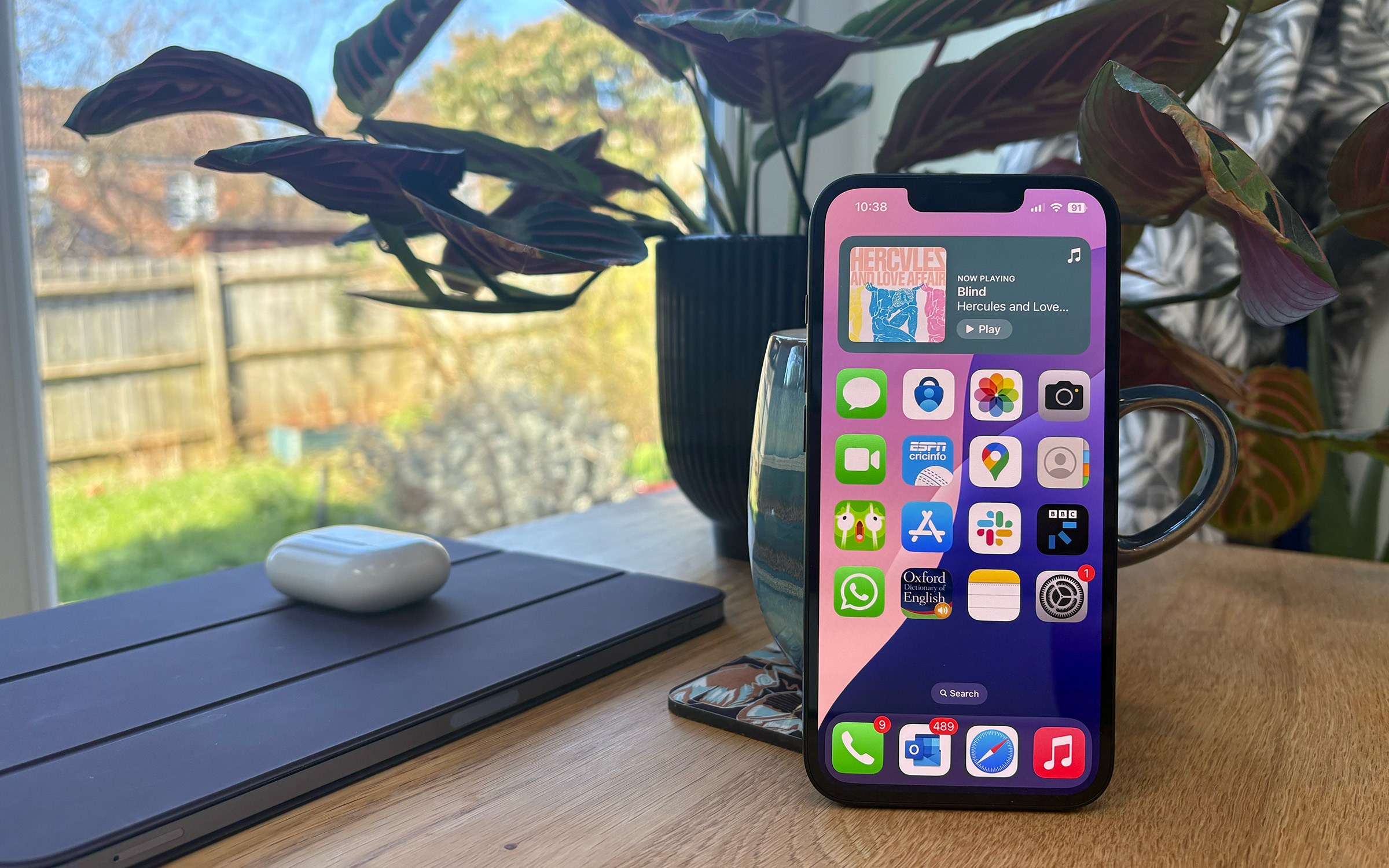
Price When Reviewed:
From $599
Best Prices Today:
The iPhone 16e arrived in February 2025 and pushed the iPhone SE and iPhone 14 out of the line up. The iPhone 16e brings the Apple Intelligence AI-powered features at a slightly more budget friendly price. Unlike the iPhone 14, the 16e has only one camera on the rear, but its a lot better than the single camera on the iPhone SE was. It also offers better battery life than the iPhone 16.
You may want to read our comparisons of the iPhone 16e vs iPhone 16 and the iPhone 16e vs the iPhone 15 to see if it’s worth saving money or spending more. We also discuss whether to upgrade from iPhone 14 to the iPhone 16e.
Read our full
Apple iPhone 16e review
6. Apple iPhone 15 Plus – The cheapest large iPhone
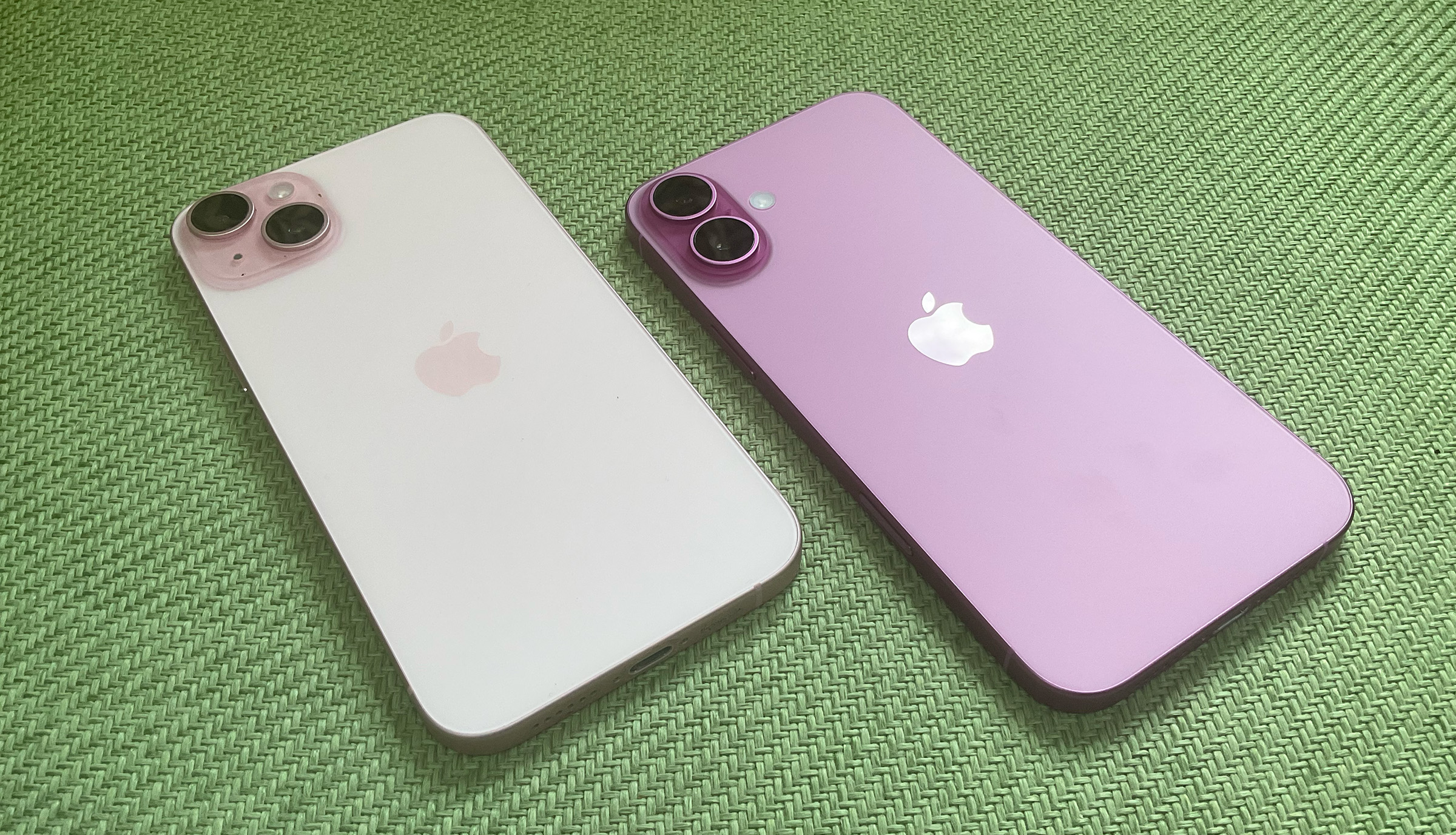
Price When Reviewed:
$799 (was $899)
Best Prices Today:
Introduced in 2023, this iPhone is identical to the iPhone 15 except for one big difference: it’s bigger. If you prefer a larger iPhone, but don’t want to spend a lot of money, this is the iPhone for you.
Like the iPhone 15, this phone doesn’t support Apple Intelligence. If you need a big phone you are probably better off with the iPhone 16 Plus.
Read our full
Apple iPhone 15 Plus review
7. Apple iPhone 15 – Too much of a compromise
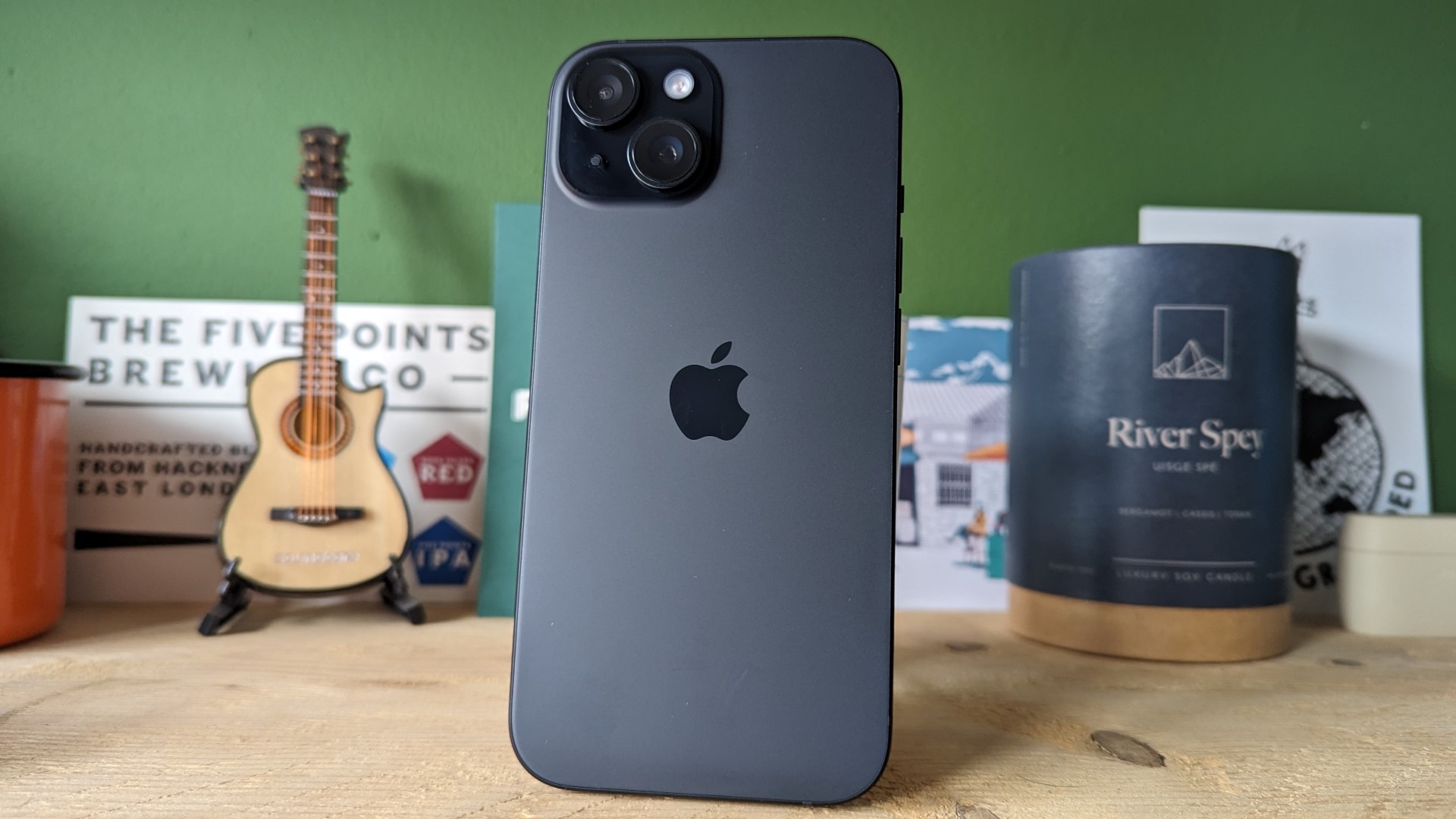
Price When Reviewed:
From $699 (Was $799)
Best Prices Today:
The standard iPhone 15 model, introduced in 2023, offered some great new features in comparison to 2022’s iPhone 14, including the Dynamic Island. The iPhone 15 camera was significantly better than the iPhone 14 camera at 48MP and with Smart HDR 5. You also get USB-C instead of Lightning.
But, now that the iPhone 16e has taken the place of the iPhone 14 in the line up the question is what the iPhone 15 offers that the iPhone 16e doesn’t. Should you pay $100 more for the iPhone 15 and get the two rear cameras, or save $100 and get a more advanced chip capable of supporting Apple Intelligence. We anticipate that over the next few years you might end up regretting it if you don’t jump on the AI bandwagon now.
How much do iPhones cost?
Each year when Apple introduces a new set of iPhones it reduces the price of the older models it continues to sell. Below you will find pricing for U.S., U.K., Canada and Australia (scroll across to see pricing in your region).
In the U.S., prices are subsidised by which ever carrier you sign up with and you pay more for an unlocked iPhone. In the U.K. and other countries an iPhone can be bought from Apple off contract and unlocked, so you can use it with an existing contract or switch networks to get a better deal.
| Model | Release date | Storage options | U.S. Price | U.K. Price | Canada Price | Australia Price |
|---|---|---|---|---|---|---|
| iPhone 16 Pro Max | September 2024 | 256GB 512GB 1TB |
$1,199 $1,399 $1,599 |
£1,199 £1,399 £1,599 |
$1,749 $2,049 $2,349 |
$2,199 $2,549 $2,899 |
| iPhone 16 Pro | September 2024 | 128GB 256GB 512GB 1TB |
$999 $1,099 $1,299 $1,499 |
£999 £1,099 £1,299 £1,499 |
$1,449 $1,599 $1,899 $2,199 |
$1,849 $2,049 $2,399 $2,749 |
| iPhone 16 Plus | September 2024 | 128GB 256GB 512GB |
$899 $999 $1,199 |
£899 £999 £1,199 |
$1,279 $1,429 $1,729 |
$1,649 $1,849 $2,199 |
| iPhone 16 | September 2024 | 128GB 256GB 512GB |
$799 $899 $1,099 |
£799 £899 £1,099 |
$1,129 $1,279 $1,579 |
$1,399 $1,599 $1,949 |
| iPhone 15 Plus | September 2023 | 128GB 256GB 512GB |
$799 $899 $1,099 |
£799 £899 £1,099 |
$1,149 $1,299 $1,599 |
$1,599 $1,799 $2,149 |
| iPhone 15 | September 2023 | 128GB 256GB 512GB |
$699 $799 $999 |
£699 £799 £999 |
$999 $1,149 $1,449 |
$1,249 $1,449 $1,799 |
| iPhone 16e | February 2025 | 128GB 256GB 512GB |
$599 $699 $899 |
£599 £699 £899 |
$899 $1,049 $1,349 |
$999 $1,199 $1,549 |
You don’t have to pay full price for a new iPhone though. Read our iPhone deals roundup for more advice on getting the lowest possible price from various different resellers and the best contract deals. We have also collected the best deals for the iPhone 16-series in the U.K. and the best deals for the iPhone 16-series in the U.S. in separate articles.
Design: How do the iPhones compare?

All the iPhones as of spring 2025.
Foundry
One easy way to distinguish the iPhone 16 line up from the previous generation is the Camera Control button on the side of the iPhone. The Camera Control button is a physical button that can be used to open the camera app, take photos and control things like the zoom. The iPhone 16e, which joined the line up in February 2025, doesn’t feature the Camera Control button and nor do the iPhone 15 and 15 Plus.
There’s a second button on the side of the iPhone 16 line up (which also features on the iPhone 16e). The Action Button (which was previously only found on the iPhone 15 Pro and Pro Max) is a customisable button that can perform certain actions, such as turning on the flashlight or silent mode. The Action Button is above the volume controls in the same position as the mute button on older iPhones.
From the front the iPhone 15 and 15 Plus are visually similar to the iPhone 16, but turn them over and the camera lenses are positioned differently (diagonally on the 15, and in parallel on the 16). The 16e only has a single camera lens on the back. From the front the iPhone 16e is the only iPhone to feature a notch, all the other current iPhones have the Dynamic Island, a little pill-shaped cutout for the front camera and sensors. Apple and app developers use the Dynamic Island to display all sorts of live information.
The iPhone 16e is the lightest iPhone on sale currently and is fractionally shorter than the iPhones 15 and 16. In fact, the screen size is slightly larger on the iPhone 15 and 16.
The iPhone 16e has the least inspiring color palette on offer with only black or white to choose from. No Ultramarine or Teal options here, those are reserved for the ‘fun’ iPhone 16, while the iPhone 16 Pro gets more business like metallic finishes.
Here’s how the dimensions and colors compare:
| iPhone | Dimensions | Weight | Colors |
|---|---|---|---|
| iPhone 16 Pro Max | 6.42 inches (163 mm) x 3.06 inches (77.6 mm) x 0.32 inch (8.25 mm) | 7.99 ounces (227 grams) | Natural Titanium, Desert Titanium, White Titanium, Black Titanium |
| iPhone 16 Pro | 5.89 inches (149.6 mm) x 2.81 inches (71.5 mm) x 0.32 inches (8.25 mm) | 7.03 ounces (199 grams) | Natural Titanium, Desert Titanium, White Titanium, Black Titanium |
| iPhone 16 Plus | 6.33 inches (160.9 mm) x 3.06 inches (77.8 mm) x 0.31 inch (7.80 mm) | 7.03 ounces (199 grams) | Ultramarine, Teal, Pink, White, Black |
| iPhone 16 | 5.81 inches (147.6 mm) x 2.82 inches (71.6 mm) x 0.31 inch (7.80 mm) | 6.00 ounces (170 grams) | Ultramarine, Teal, Pink, White, Black |
| iPhone 15 Plus | 6.33 inches (160.9 mm) x 3.06 inches (77.8 mm) x 0.31 inch (7.80 mm) | 7.09 ounces (201 grams) | Pink, Yellow, Green, Blue, Black |
| iPhone 15 | 5.81 inches (147.6mm) x 2.82 inches (71.6 mm) x 0.31 inches (7.80 mm) | 6.02 ounces (171 grams) | Pink, Yellow, Green, Blue, Black |
| iPhone 16e | 5.78 inches (146.7 mm) x 2.82 inches (71.5 mm) x 0.31 inch (7.80 mm) | 5.88 ounces (167 grams) | Black, White |
Software: Which iPhones get Apple Intelligence
Apple Intelligence, the a suite of AI features that include writing tools, image generation, image recognition, “Genmoji” emoji generation, and new capabilities for Siri is only available on the iPhones that have a 16 in their name. That’s the iPhone 16e, 16, 16 Plus, 16 Pro, and 16 Pro Max. The iPhone 15 and 15 Plus miss out (even though the iPhone 15 Pro and Pro Max were Apple Intelligence ready).
While there is nothing drastically important that you might miss out on if you don’t have Apple Intelligence right now, it’s likely that in time not having Apple Intelligence will be more of a hinderance than it is currently. For example, there are some really impressive AI features coming in iOS 19 that we anticipate will make the Apple Intelligence capable phones even more attractive, so if you don’t want to be suffering from FOMO then get on the AI bandwagon now with an Apple Intelligence-capable phone.
Find out about what Apple Intelligence is by reading our guide: Apple Intelligence FAQ, what it is, what it does.
Screen: How are the iPhone displays different?
The Pro and Pro Max iPhones have the best screens available on an iPhone. The iPhone 16 Pro and Pro Max offer ProMotion, which allows for an adaptive refresh rate. The refresh rate goes as high as 120Hz for really smooth scrolling and as low as 1Hz. ProMotion has been a staple of the “Pro” iPhones for years, but new to all the 2024 iPhone 16 models is the ability for the screen to get very very dim (down to 1 nit) while still remaining usable. It’s great for dark rooms. (The iPhone 16e has a less bright screen and lacks this dimming feature.)
Thanks to the Always-On screen on the iPhone 16 Pro models you will always be able to see elements such as the time and date, notifications and Lock Screen widgets without waking the iPhone. The screen dims to minimize onscreen power usage to preserve battery life and it will turn off should you place it face down or walk away while wearing an Apple Watch. Like ProMotion, always-on displays are a feature of Pro iPhones.
Both the iPhone 15 and 15 Plus also offer a few more pixels than their predecessors, matching the pixels of the Pro and Pro Max handsets this time round.
The screen size may be the most important factor in your decision. If you prefer a larger screen, you’ll want the “Plus” or “Pro Max” version. The iPhone 16 Pro Max has a screen size of 6.9 inches diagonally, up from 6.7 inches in prior years and with the other Plus-size iPhones. It’s a small difference, but one you can notice. The iPhone 16 Pro is larger than the iPhone 16, too: 6.3 inches compared to 6.1 inches.
As we mentioned above, the iPhone 16e is fractionally shorter than the iPhones 15 and 16. While Apple the iPhone 16e, 16 and 15 as having a 6.1-inch display, actually the screen on the iPhone 16 and 15 is 6.12-inches, while the 16e screen is 6.06-inches. This allows for a few more pixels than the iPhone 16e: 2,556-by-1,179-pixel vs 2532-by-1170-pixel resolution at 460 ppi.
Camera: How do the iPhone cameras compare?
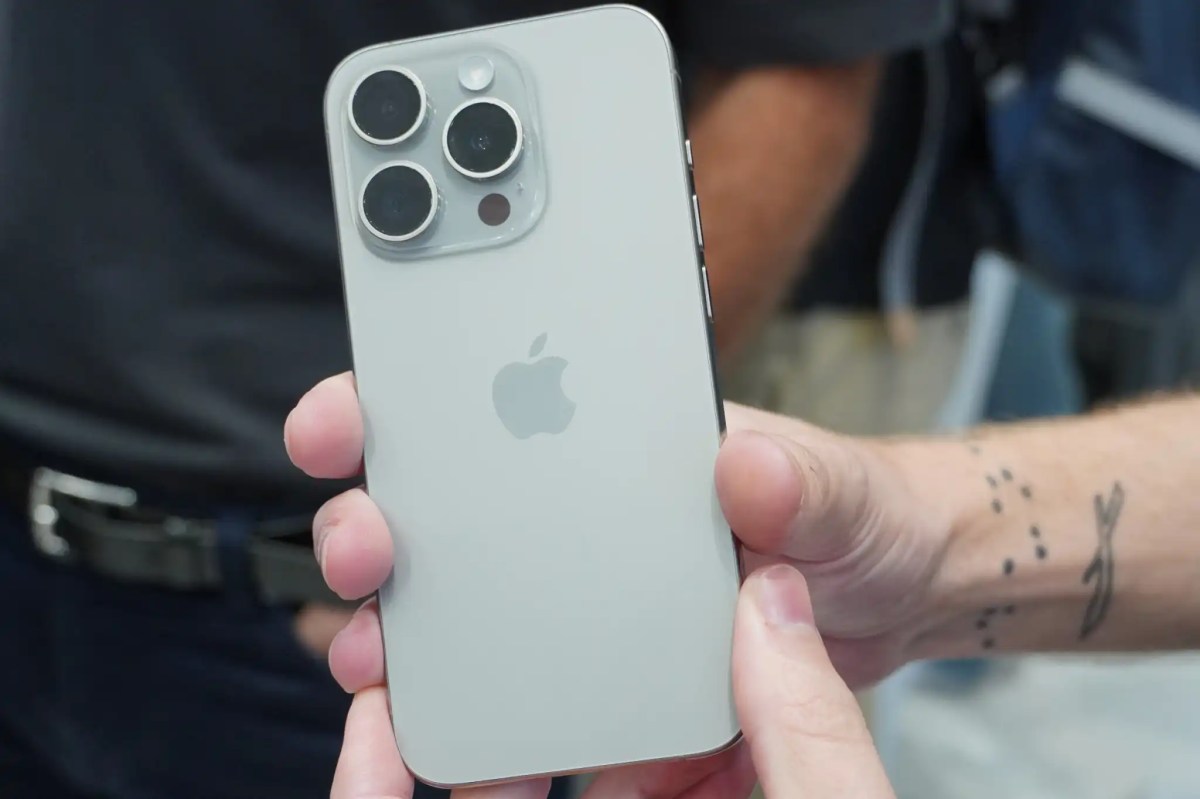
Jason Snell / Foundry
For many it’s the capabilities of the cameras that sell the iPhones, so it’s no wonder that every year Apple improves the camera on its iPhones, sometimes improving the tech, sometimes the software. The iPhone 16 and 16 Plus still feature a dual-camera array with wide and ultra-wide lenses, while only the Pro and Pro Max offer the additional 5x telephoto lens.
The iPhone 16 Pro and Pro Max have a 48 megapixel Ultra Wide camera, while the 15 and 15 Plus have a 12 megapixel Ultra Wide. However, the 16 and 16 Plus can now shoot macro photos, a feature that used to be reserved for the Pro models.
There are also new video recording features for the pro models, including ProRes video recording up to 4K at 120 fps, LOG video recording and Academy Color Encoding.
The iPhone 16e features a single-lens camera system, omitting certain advanced features found in higher-end models. However, it still delivers notable improvements over previous budget iPhones, with camera capabilities that are suitable for everyday photography needs
Also read: Which iPhone has the best camera?
| iPhone | Cameras | Video | Photo & video features |
|---|---|---|---|
| iPhone 16 Pro and Pro Max | Three rear cameras: 48MP Main (ƒ/1.78 aperture), 48MP Ultra Wide (ƒ/2.2 aperture) and 12MP Telephoto (ƒ/2.8 aperture), second-generation sensor-shift optical image stabilization, 5x, 1x, 2x, 0.5x optical zoom, Adaptive True Tone flash Front camera: TrueDepth front camera, 12 MP (ƒ/1.9 aperture) |
Video: ProRes video recording up to 4K at up to 120 fps (with external recording), 4K video recording at up to 120 fps, 1080p HD video recording at up to 120 fps, HDR video recording with Dolby Vision up to 4K at 120 fps, Sensor-shift optical image stabilization for video, Spatial video up to 1080p at 30 fps | LOG video recording, Academy Color Encoding System, Photonic Engine, Night mode portraits, Night mode, new Photographic Styles, Macro photos, ProRaw, Smart HDR 5 Cinematic mode, Macro video recording, Action Mode, Audio zoom, wind noise reduction |
| iPhone 16 and 16 Plus | Two rear cameras: 48MP Main (ƒ/1.6 aperture), 12MP Ultra Wide (ƒ/2.2 aperture), sensor-shift optical image stabilization, 2x, 1x, 0.5x zoom, True Tone flash Front camera: TrueDepth front camera, 12MP (ƒ/1.9 aperture) |
Video: 4K video recording at 24 fps, 25 fps, 30 fps or 60 fps, 1080p HD video recording at 25 fps, 30 fps or 60 fps, HDR video recording with Dolby Vision up to 4K at 60 fps, Sensor-shift optical image stabilization for video, Spatial video up to 1080p at 30 fps | Photonic Engine, Action Mode, Night mode, new Photographic Styles, Smart HDR 5 Cinematic mode, Audio zoom, wind noise reduction |
| iPhone 15 and 15 Plus | Two rear cameras: 48MP Main (ƒ/1.6 aperture), 12MP Ultra Wide (ƒ/2.4 aperture), sensor-shift optical image stabilization, 2x, 1x and 0.5x optical zoom, True Tone flash Front camera: TrueDepth front camera, 12MP (ƒ/1.9 aperture) |
Video: 4K video recording at 24 fps, 25 fps, 30 fps or 60 fps, 1080p HD video recording at 25 fps, 30 fps or 60 fps, HDR video recording with Dolby Vision up to 4K at 60 fps, Sensor-shift optical image stabilization for video | Photonic Engine, Action Mode, Night mode, Photographic Styles, Smart HDR 5 Cinematic mode, Audio zoom |
| iPhone 16e | One rear cameras: 48MP Main (ƒ/1.6 aperture), optical image stabilization, 1x, 2x, zoom, True Tone flash Front camera: TrueDepth front camera, 12MP (ƒ/1.9 aperture) |
Video: 4K video recording at 24 fps, 25 fps, 30 fps or 60 fps, 1080p HD video recording at 25 fps, 30 fps or 60 fps, optical image stabilization for video | Photonic Engine, Night mode, Photographic Styles, Smart HDR 5, wind noise reduction |
Safety features: Emergency protection
Apple introduced some safety features with the iPhone 14 series in 2022 and these are available on all the iPhone 15 and iPhone 16 models. These features include a Crash Detection feature and Satellite Connectivity for emergency phone calls.
Crash detection uses the gyroscope and accelerometer in the iPhones to recognize if the vehicle you are in has crashed. If the iPhone thinks you’ve been involved in a crash, it will call emergency services and notify your preferred contacts (unless you tell it not to).
All phones offer the ability to send an Emergency SOS, but since the iPhone iPhones have been able to do so via satellite, which would be useful if you were in an area with no signal. You just need to be able to establish a clear view of the sky, and be in a country that supports the feature (many do now). Thanks to the feature your iPhone can alert the emergency services to your location in an emergency, the iPhone will also contact your emergency contact.
Durability: Which iPhone is the toughest?
Another factor in the choice of which iPhone to choose is how durable the model is. How likely are you to damage the iPhone?
All iPhones on sale right now offer a Ceramic Shield front, which should mean that the glass on the front is less likely to smash if you drop it. Only the Pro and Pro Max are constructed from titanium (previous generations were stainless steel), which is more durable than aluminum, which all other iPhones are encased in.
All iPhones have a glass back (which is necessary for MagSafe wireless charging). This does mean that if you drop your iPhone with no case on then you are pretty much guaranteed to break the glass on the back. So be sure to pop your new iPhone in a case. For our recommendations see our round-up of the Best iPhone 16 cases.
The other way people damage their iPhones is by dropping them in water. All current iPhones are rated as water resistant to a depth of 6 meters for up to 30 minutes (IP68). We still wouldn’t recommend getting your iPhone wet though because Apple will know if it’s gotten wet and it could void your warranty should anything go wrong.
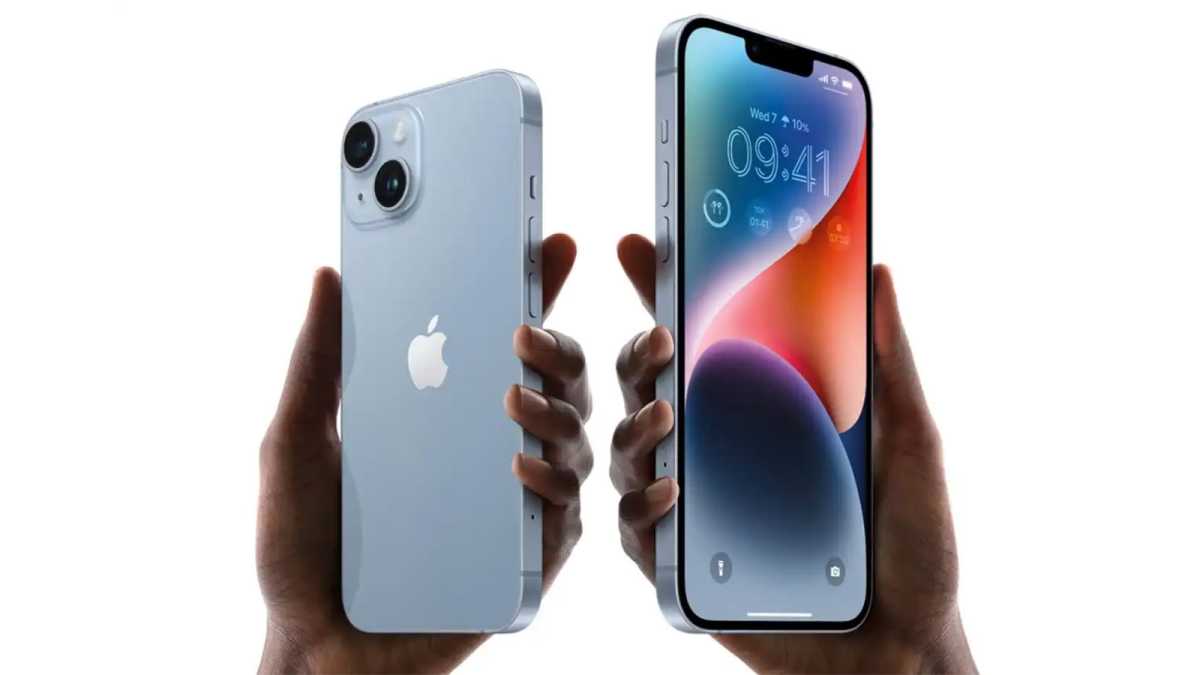
Apple
Specs: Storage and processor options
The A18 in the iPhone 16, 16 Plus and iPhone 16e is considerably faster than the A16 found in the iPhone 15, especially when it comes to graphics or AI tasks. There is one fewer GPU core in the iPhone 16e (4-core GPU, compared to 5-core GPU in the 16 and 16 Plus).
The A18 Pro in the iPhone 16 Pro and Pro Max is distinguished primarily by an extra GPU core (6-core GPU), though it also has super video hardware to support the Pro video features.
As mentioned above the A18 is able to support Apple Intelligence. The A16 in the iPhone 15 cannot.
Each iPhone is available in between three and four capacity options. It’s important to consider how much you need before buying because iPhones don’t have a microSD card slot that will allow you to add additional storage at a later date. For the typical iPhone user, 128GB is probably sufficient.
One reason you may not need more storage is if you choose to sync your data to the cloud. If you pay a monthly fee for iCloud storage all your data will be available on any of your devices, and crucially your photos will be stored in the cloud rather than on your device, freeing up many gigabytes of space. iCloud starts at $0.99/£0.99 for 50GB. See How much does iCloud cost for more information, including Australian and Canadian prices.
Before you decide how much storage you need have a look at your current phone’s usage (go to Settings > General > iPhone Storage) and think about how much space you really need. Read How much storage do you need on an iPhone? for more advice.
| iPhone | Processor | Storage | Battery life |
|---|---|---|---|
| iPhone 16 Pro Max | A18 Pro chip, 6-core CPU, 6-core GPU | 128GB 256GB 512GB 1TB |
Up to 33 hours video playback, up to 50% charge in 35 minutes with 20W adapter or higher |
| iPhone 16 Pro | A18 Pro chip, 6-core CPU, 6-core GPU | 128GB 256GB 512GB 1TB |
Up to 27 hours video playback, up to 50% charge in 30 minutes with 20W adapter or higher |
| iPhone 16 Plus | A18 chip, 6-core CPU, 5-core GPU | 128GB 256GB 512GB |
Up to 27 hours video playback, up to 50% charge in 35 minutes with 20W adapter or higher |
| iPhone 16 | A18 chip, 6-core CPU, 5-core GPU | 128GB 256GB 512GB |
Up to 24 hours video playback, up to 50% charge in 30 minutes with 20W adapter or higher |
| iPhone 15 Plus | A16 Bionic chip, 6-core CPU, 5-core GPU | 128GB 256GB 512GB |
Up to 26 hours video playback, up to 50% charge in 35 minutes with 20W adapter or higher |
| iPhone 15 | A16 Bionic chip, 6-core CPU, 5-core GPU | 128GB 256GB 512GB |
Up to 20 hours video playback, up to 50% charge in 30 minutes with 20W adapter or higher |
| iPhone 16e | A18 chip, 6-core CPU, 4-core GPU | 128GB 256GB 512GB |
Up to 26 hours video playback, up to 50% charge in 30 minutes with 20W adapter or higher |
Battery: Battery life and charging
The iPhone 16 models offer a big boost in battery life over the iPhone 15 and even further over the iPhone 14. In our testing, the difference in battery life was even more pronounced than Apple’s spec sheets indicate—we saw battery life improvements of around 20 percent for the regular models and 30 percent for the Pro models.
As for how you charge the iPhone, fast charging requires a 20W adapter or higher that plugs into either the USB-C on 2023 iPhones, or the Lightning port on older iPhones. All but the iPhone SE 3 can also be charged wirelessly via MagSafe. The iPhone 16 models support faster MagSafe charging when used with a 30W power adapter.
Apple’s official battery life and charging times can be seen in the table above.
In our testing, the iPhone 16 line offered a big boost in battery life over prior models, too. Apple claims the iPhone 16e has even better battery life than the iPhone 16. However, in our tests the 16e managed 13 hours and 38 minutes, which is lower than any other 16-series iPhone.
We compare battery life, capacity, mah and watt hours for every iPhone separately.
Which iPhone should I buy?
The best iPhone you can buy right now is the iPhone 16 Pro or Pro Max, depending on whether you want a larger display or not.
The iPhone 16 and 16 Plus are probably a better value, though. They support Apple Intelligence and have the Camera Control button and have fantastic battery life and performance, so all you’re really giving up is the 5x telephoto camera (you still get a 2x optical crop-zoom mode) and some high-end video features.
You could save money and opt instead for an iPhone 15, which might appeal if you are upgrading from a particularly old iPhone, but we think a much better option is the iPhone 16e, which will be future-proofed for upcoming Apple Intelligence features. Unless you really want the additional ultra-wide camera, which is missing from this phone.
Once you have chosen your new iPhone be sure to read our iPhone setup guide.
Buying an iPhone on contract
The two most common ways to buy an iPhone are SIM-free from Apple itself or a third-party reseller (which is where the pricing information throughout this information fits in, because you’ll be paying upfront for the phone, you will own it, and you will then need to pay for a SIM-only contract for minutes, texts and data), or buying an iPhone on contract.
A contract usually starts with an upfront payment that will vary depending on the iPhone model you go for and also how much you’ll be paying each month. That upfront payment is followed by monthly payments, normally for a total of 24 months, after which you own the phone (in most cases). Those monthly payments also cover data, minutes and texts.
The following networks are worth checking for their contract offers:
U.K. readers can find iPhone contracts from the following networks:
And from the following third-party resellers:
Using the iPhone Upgrade Program
Apple offers a scheme called the iPhone Upgrade Program, which works with your carrier and starts at $39.50/£42.95 per month. You can then upgrade to the new iPhone each time one is announced, staying on the same or a very similar plan.
You should be cautious about the value this offers, but in some circumstances, it may be the right approach for you.
The scheme works slightly differently in the U.K., where this is for a SIM-free iPhone. You will also need to get a SIM-only contract for your data, minutes and texts.
You do get AppleCare+ included in the Upgrade Program, though, which is a two-year insurance for your iPhone that will cover you for two incidents of accidental damage. You’ll still have to pay an excess fee should you need to use it, but it’ll be much cheaper than having to cough up the full price of a repair.
Buying a second-hand and refurbished iPhone
You’ll have noticed that buying an iPhone doesn’t come cheap. However, if you’re strapped for cash you don’t have to dismiss the idea of buying an iPhone completely. You may be able to get a good deal on one of the older handsets if someone is looking to sell their current handset. Here are or recommendations of the best place to buy a used iPhone.
Not sold on iPhone after all?
By now we hope we’ve helped you to find the perfect iPhone for you. Of course, there are alternatives outside Apple’s ecosystem. Our sister site Tech Advisor can help you find the best phone if you’re considering switching to Android (or maybe just want to laugh at the competition).






